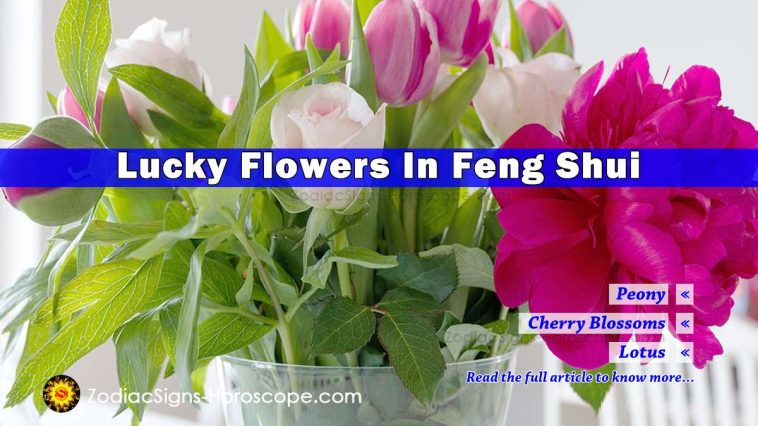Know about the 7 Lucky Flowers in Feng Shui
An appreciation of Flowers Feng Shui principles enables you to improve these many aspects of your life by manipulating particular objects or designs within your surroundings.
The meaning of Feng Shui
In English, Feng Shui translates as “wind water.” Wind and water flow, move, and circulate everywhere on earth and are the essential elements required for survival.
The combination of wind and water heavily influences the climate, which, in turn, dictates our food supply and affects many aspects of our lives, including our health, energy, and mood.
In the philosophy of Feng Shui, the quintessential quality of wind and water is their flowing nature.
Feng Shui is all about flow. Each thing that makes up this vast landscape is alive and has an energetic value. Everything from plants, animals, and people, to inanimate objects, exists within this vast landscape and contributes to the flow.
This collective flow is known in Feng Shui as chi.
Historically, Feng Shui was applied in the orientation of buildings to place them favorably. In more recent times, it usually refers to the art of designing your environment in harmony with the chi in one’s own living space. This flow supports and enhances one’s chi.
Flowers and Feng Shui
Flowers evoke feelings that cross cultural boundaries, interpretations, and meanings. Living flowers bring some chi qualities to the home.
Flower color, number, and symbolism all play a role in Feng Shui.
Let’s take a look at some of the most popular flowers used in Feng Shui applications.
1. Peony
Contrary to traditional Western beliefs, peonies, not roses, are the flowers of romance, at least regarding Feng Shui. The peony is a metaphor for female beauty and is considered one of the most sensual flowers because of its delicious scent.
If you’re single, placing peonies in your room will help you find a suitable partner/spouse. If given on a wedding day or the day of engagement, it promotes a happy and successful marriage.
In the home of a married couple, it aids in the maintenance of a happy marriage and drives away the curse of infidelity.
2. Lotus
The lotus flower is sacred all around the world. It often symbolizes rebirth, resurrection, and cleansing.
In Chinese medicine, every part of the lotus plant has medicinal properties making it the perfect flower. In Feng Shui, it is believed to induce more noble, upright, and honest characteristics.
It has also been said to promote luck, health, and harmony in the home and relationships.
Depending on your life’s area you’re trying to attain more chi in, the lotus can be placed in your home’s general living space or the bedroom.
3. Cherry Blossoms
Cherry blossoms are one of the most popular items in Feng Shui because of their broad applications in marriage, romance, and health.
Blossoms are a classic symbol of spring. Therefore, they represent new beginnings and a sense of freshness and innocence.
Cherry blossoms are a symbol of love and marriage cure for couples having relationship problems and health issues. So flowers are best placed in the living room.
4. Orchid
The orchid brings the energy of untainted natural symmetry. They are also a symbol of fertility (in both people and agriculture) and are considered to bring energies of abundance and spiritual growth.
Due to its broad applications, the orchid has beneficial Feng Shui applications in any house area.
5. Narcissus
This flower is often used as a Feng Shui cure for problems associated with your profession. There are white and yellow Narcissus flowers. However, the white-colored Narcissus flowers are considered to be more effective in triggering one’s career than the yellow-colored ones.
Proper and regular placement in homes and offices can bring forth much prosperity and rewards.
6. Chrysanthemum
This flower provides abundant physical and mental strength and energy. Place in any area of the home or office to reap the rewards of these beautiful flowers.
7. Colour Combinations
The type of flower is important in the promotion of chi in aspects of one’s life. Equally as important is the color. Red is a dominant, overpowering color.
Therefore, it should be avoided when visiting someone who is sick or at the beginning of a relationship as it can prematurely flame out the romance.
When giving flowers to a new couple, opt for more sentimental colors like pink or yellow.
However, red is effective when attempting to spark a dormant sex life for a couple due to its symbolism of passion and amorous love.
Certain combinations of colors should be avoided. On the other hand, Rainbows’ colors are okay as long as all of the colors are represented.
Conclusion
Each item in this natural order of the world is equally alive and has an energetic value, existing in a vast landscape swirling with vital energy or life force.
Since it is too great of a task to organize the world’s chi at large, Feng Shui divides the vast landscape of energies into more manageable units.


